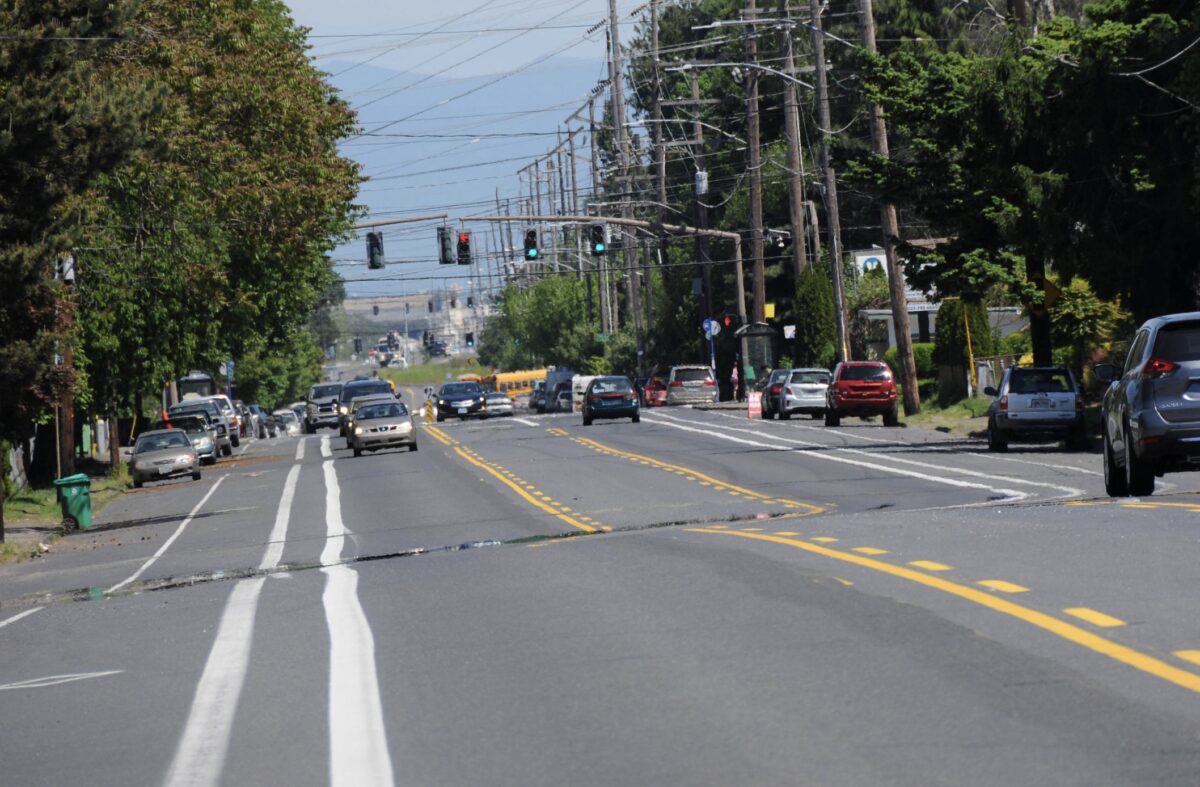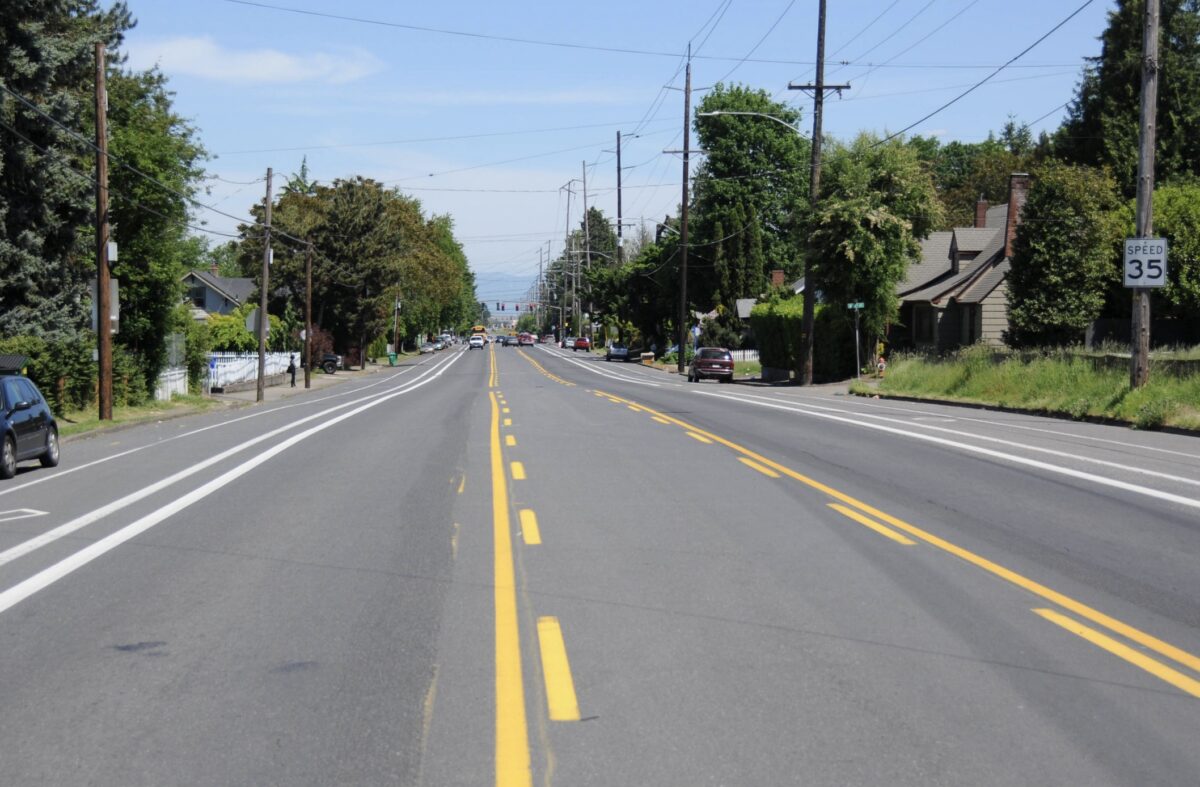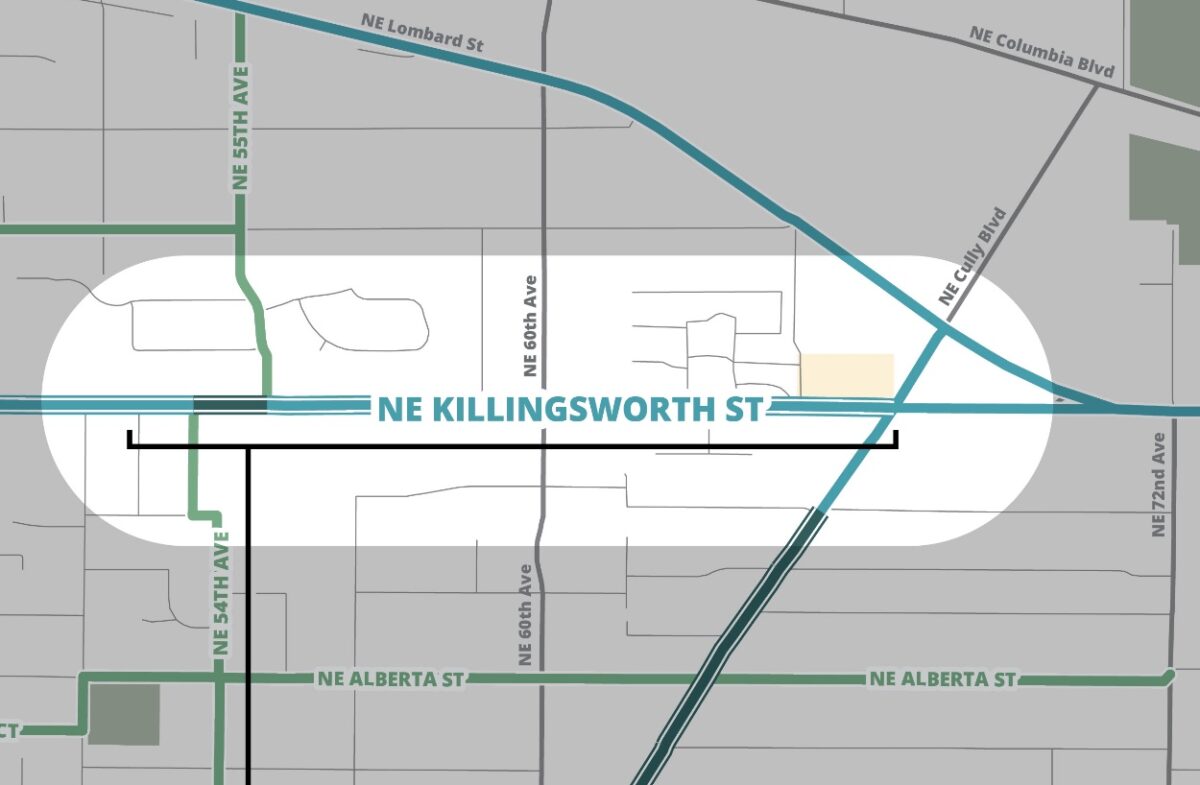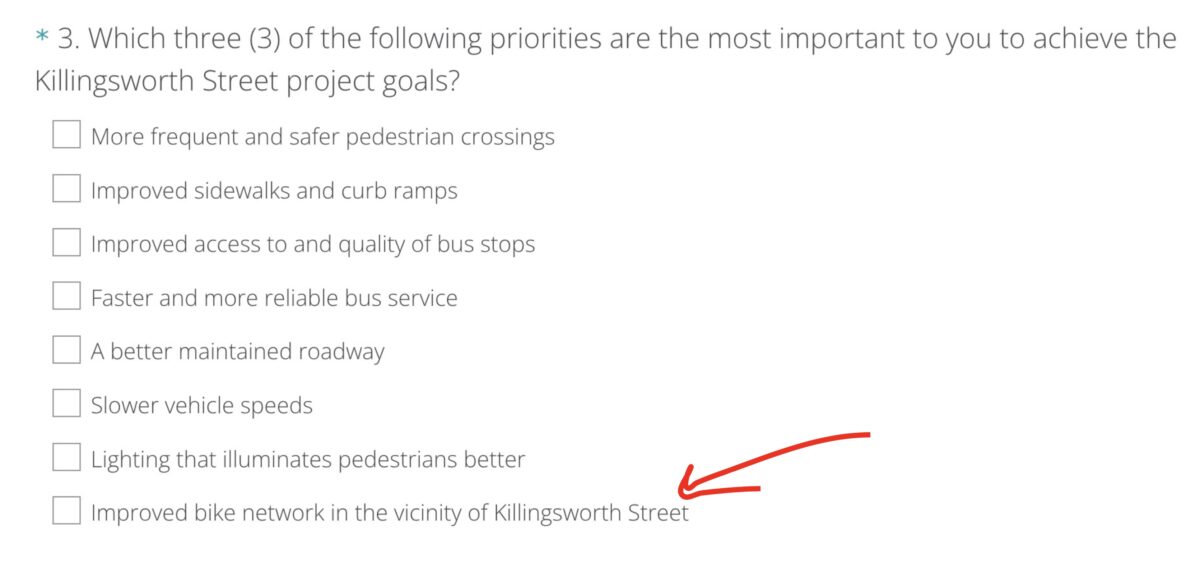The City of Portland is gearing up to repave Northeast Killingsworth Street between 53rd and Cully Boulevard and parking-protected bike lanes are on the table. The project is similar to the Hawthorne Pave & Paint in that the transportation bureau (PBOT) is seizing an opportunity to redesign the roadway in conjunction with a planned paving project.
This segment of NE Killingsworth currently has unprotected, door-zone bike lanes and a 30 mph speed limit. You might recall that there’s already been some advocacy history with this project. Back in March, we reported that PBOT’s initial plan was to simply repave the street and replace it with the exact same cross-section as it has today: one general travel lane in each direction, one center turn lane, bike lanes, and parking on both sides.
But when a coalition of nonprofits got wind of PBOT’s plan, they demanded a pause to consider protected bike lanes. PBOT listened and responded. Now it appears the city is ramping up outreach in order to finalize a plan and get the project slated for construction next spring.
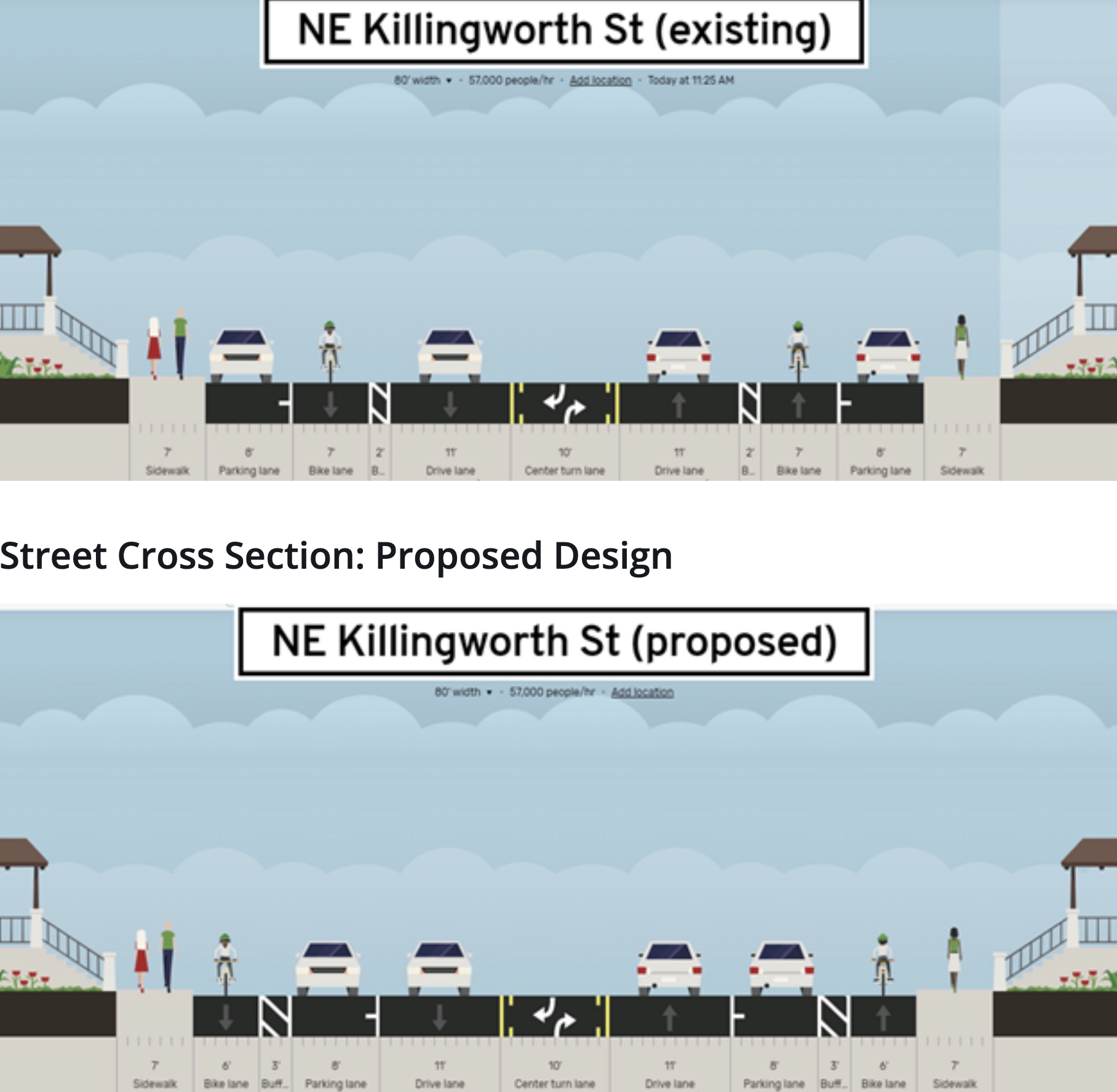
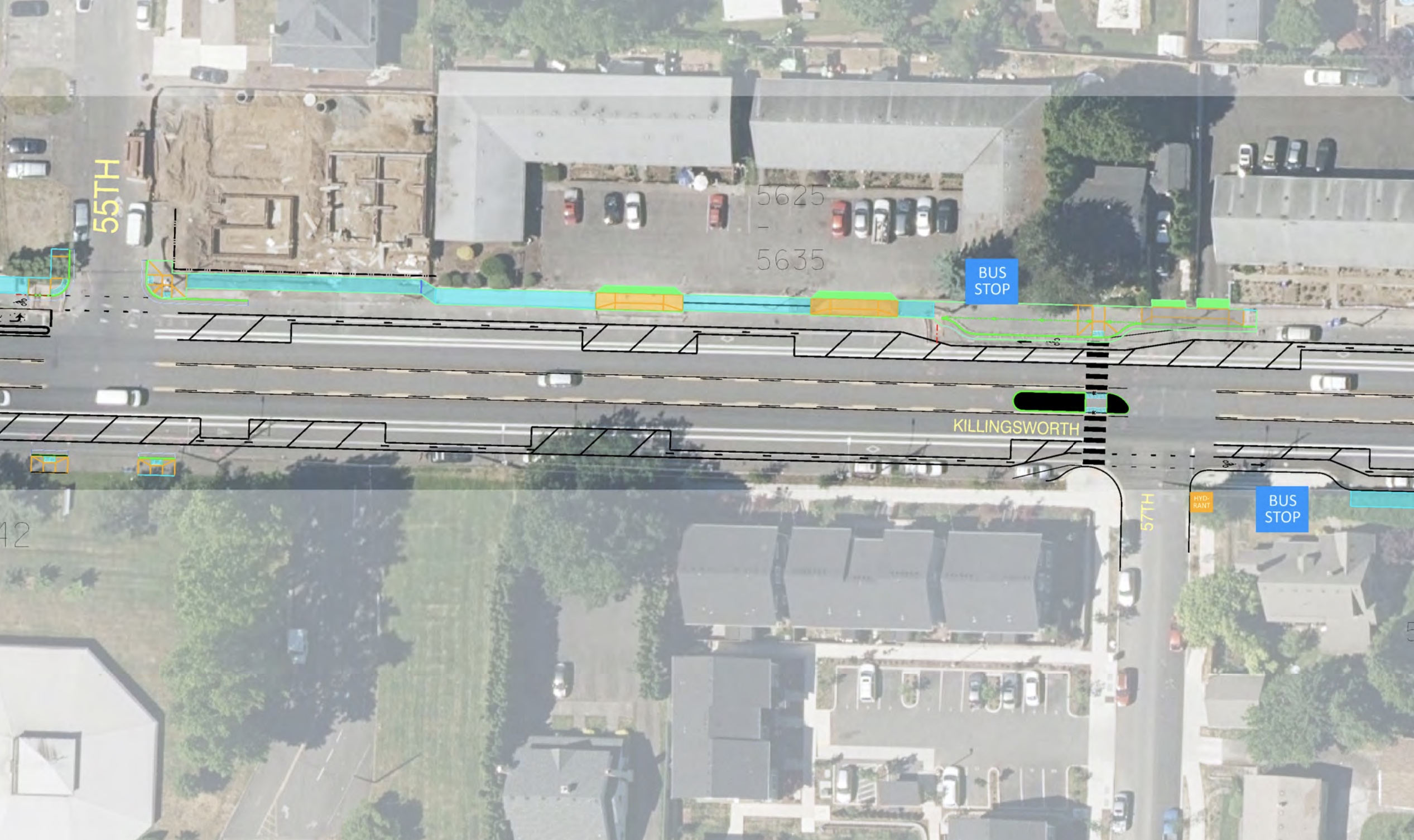
According to cross-section drawings on the project website, PBOT is open to swapping the current bike lane and parking lane. This would put bicycle riders curbside and make them protected from other lane users due to a buffer of parking spaces — a common PBOT design that’s currently in use on inner SE Hawthorne, N Rosa Parks Way, and many other places. When PBOT creates these parking-protected bike lanes, it’s not a clean swap. In order to boost visibility at intersections, they must reduce the amount of car parking spaces.
PBOT is clearly feeling sheepish about how this will be received by people who live and work on the street because they go to great lengths on the project website to explain how car parking might be impacted. Here’s how they frame the changes:
To maintain safe visibility, roughly half the on-street parking spaces will have to be removed if we implement a parking-protected bike lane. However, a recent parking study indicates that most blocks will still have enough parking capacity to meet current demand…
To assess the parking impacts of the proposed redesign of NE Killingsworth with parking-protected bike lanes, we calculated how many spaces would be available post-implementation, then looked at how the current occupancy compares to that revised capacity. We found that in both the average and peak usage scenarios, most blocks will have plenty of available on-street parking spaces. However, in some blocks the demand will outstrip the proposed supply and in that case drivers may have to park on adjacent blocks and walk further to their destinations…
All in all, these parking impacts appear to be relatively minor and worth it for the safety benefits that the proposed street redesign offers.
PBOT has also launched an online survey to gauge public opinion about the idea. One thing that caught my eye in the survey was a question where I could pick my top three priorities that would help the street reach the stated project goals. There was only one option that mentioned bicycling and it was about improving the bike network “in the vicinity of Killingsworth.” I found it odd that they didn’t say “on Killingsworth.”
PBOT has an unfortunate history of pushing bicycle riders away from main streets and onto backstreets. Portland will never reach its transportation goals if we don’t insist on building high-quality, low-stress cycling facilities on major streets. This Killingsworth project is another golden opportunity to transform a important neighborhood arterial from a car-oriented thoroughfare to something much more accessible, humane and efficient.
In addition to a possible bike lane redesign, PBOT also plans to upgrade some crossings. They’ll replace the mid-block half-signal between 54th and 55th with a median island crossing and will add more islands to the existing crossing at 64th.
View the design plans, find the survey link, and learn more at the project website.
